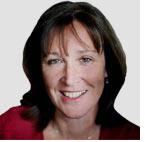 I want the world to be a better, healthier place. Really I do. And now, at my first TEDMED conference in Washington DC, I have high hopes of hearing from people already working on that. TEDMED runs a fairly linear conference structure—big auditorium, big thinkers on the stage, for short, pack a punch presentations. At the back of the programme, Jay Walker, the curator of the programme is quoted as saying, “TEDMED is all about patterns in the clouds. It’s all about connections. It’s all about seeing things that everybody has seen before but thinking about them in ways that nobody has thought of them before.” There are 2,700 places around the world taking part virtually.
I want the world to be a better, healthier place. Really I do. And now, at my first TEDMED conference in Washington DC, I have high hopes of hearing from people already working on that. TEDMED runs a fairly linear conference structure—big auditorium, big thinkers on the stage, for short, pack a punch presentations. At the back of the programme, Jay Walker, the curator of the programme is quoted as saying, “TEDMED is all about patterns in the clouds. It’s all about connections. It’s all about seeing things that everybody has seen before but thinking about them in ways that nobody has thought of them before.” There are 2,700 places around the world taking part virtually.
I have three and a half days to see if it delivers. The first evening errs on the side of style (think large rally) over substance. The TEDMED community is already an established one. It is about trusting each other, making connections, and apparently not taking notes during talks. “Do you mind not making notes, I find it terribly distracting,” says the woman sitting next to me. “What, does no one make notes?” I ask, since this is the only way I can make sense of anything I am told that is more than a short sentence. She shakes her head. “You’re really meant to be totally in the moment.”
Maybe she had read my notes on Kishi Bashi, the musician who kicked off the conference by improvising with an electric violin, which he also used as a guitar, as well as a keyboard, and his voice. “What is he wailing about?” I’ve typed into my iphone. “What is this about?” The auditorium erupts with enthusiasm. I feel like the only unconverted person in an evangelical rally. His improvisation is about the uniqueness of the now, says Walker.
The next speakers I dare not make notes on. They both talk about influential moments in their childhoods for a bit before delivering their punch lines. This is effective because then they don’t have to say how anything will actually happen. So the speaker who talks about how his father pushed him into math when he wanted to be an artist, and then spent years working in computers before studying art, may be right when he says applying design thinking will create better healthcare solutions, but I would think that anyone would know you need imagination to transform how we deliver healthcare.
Walker points out that TEDMED is effectively run by artists, which the audience applauds enthusiastically. When one of the speakers talks about colonoscopies being dangerous procedures that can kill people someone, who I can only assume is not an artist, audibly snorts behind me.
Everyone agrees that America Bracho is the star of the night. She is Venezuelan by birth. Childhood experiences must be mandatory at TEDMED as she tells us movingly of her father instilling a sense of social injustice into her—so she wondered why she had shoes and other children did not. She became a doctor, but realised this would not make inroads into solving social injustice, and converted to public health, becoming the executive director of Latino Health Access, a centre for health promotion and disease prevention in Santa Ana. By allowing the community itself to decide how to manage and prevent disease through training community health workers, she has turned patients seen as “non compliant” into wonderful advocates for health. She is “a force of nature” says Walker. She is certainly the only one to tell us what she has actually done. And she has a chat on stage with Harvey Fineberg, (straight man to her passionate delivery) president of the Institute of Medicine, who asks her if anyone can be a community health worker. “ When we recruit,” she says. “I tell them that the most important thing is for the person to want to reduce social injustice.”
Fineberg asks about the role of doctors. They do have one, says Bracho, but they have to realise they are nothing special—it is the community who are the experts.
You have to be good to follow Bracho, and Rafael Yuste, professor of Biological Sciences at Columbia University, has a good idea—we should find out how our brains work—what our whole brain is doing at any one time. (I am missing out his childhood influences for brevity.) It is such a good idea that President Obama supports it, and the project is called the Brain Initiative, and has substantial funding. He shows us a map of a mouse’s brain with grey neurons turning red as they start firing. Such knowledge might help us treat neurodegenerative disorders.
The evening ends with Regina Benjamin, the Surgeon General, pronouncing we should all walk more. Since TEDMED has had us sitting for two hours without a break I decide to get up and walk the hundred yards to the shuttle bus to my hotel.
Luisa Dillner is head of BMJ Group research and development.
